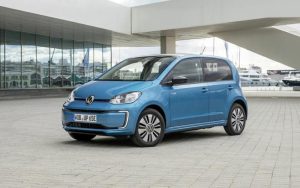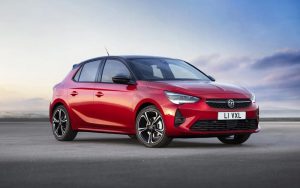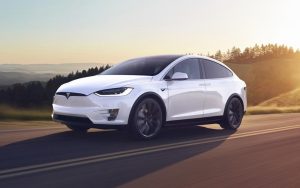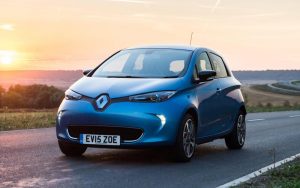Introduction
The Volkswagen e-Up is a tiny electric city car that shares many mechanical components with the SEAT Mii Electric and the Skoda Citigo e.
It’s akin to choosing between Heinz, Waitrose, or Asda ketchup in this regard – they all utilize the same ingredients, but paying a little more gets you a fancier-looking bottle with a posher label on the top.
Unfortunately, the VW e-Up lacks any distinguishing features that would alert you that it is an electric vehicle.
Sure, the front bumper has been tweaked a little, and many of the air vents that were initially installed to cool the basic Up’s petrol engine have been sealed in, but that’s it.
Don’t get the wrong idea: this doesn’t imply VW has gone crazy with the interior design of the e-Up. You’d be forgiven for believing you were in a typical petrol-powered city car if it weren’t for the new dials and Eco mode buttons.
The heating controls remain incredibly simplistic, and the dashboard and door plastics are just as rough and scratchy.
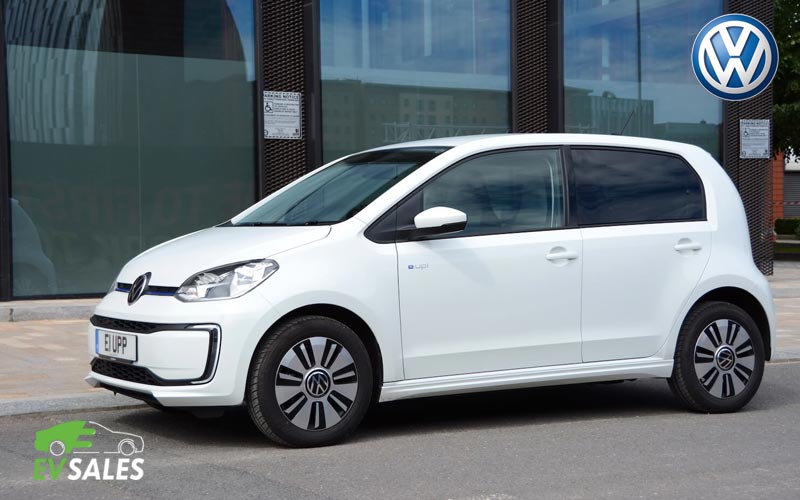
Turns out…
The VW e-smartphone-based Up’s infotainment system is similarly basic, but it’s really simple to operate. You won’t get a huge touchscreen as in the Renault Zoe electric car, but you will be able to use your navigation and music-streaming apps without having to fiddle with cables.
How about we look at this car in a bit more detail,
Just keep reading…
Specifications

The Volkswagen e-Up doesn’t make a big deal about its zero-emissions credentials when you’re driving.
The rev counter has been replaced by a dial that displays how much electricity you’re using (or regenerating), and the fuel gauge now displays how much battery charge is left rather than how much gasoline is in the tank. You could be sitting in a standard Volkswagen Up otherwise.
This small car has brake lights, lane assist, heated windscreen, many drive modes, enhanced functionality, phone holder, audience insights, center console, regenerative braking, heavy batteries, and more.
No doubt, it is one of the best small electric cars.
Features
The VW E Up has a comfy seat with acceptable visibility, and the driving posture is mainly good.
However, you may find it difficult to get entirely comfortable because the steering wheel only goes up and down (rather than in and out).
Dashboard
The e-dashboard Up’s is well-organized; however it lacks the traditional touchscreen infotainment system found in the Renault Zoe and other competitors.
Instead, a 0 in the color screen shows the radio station and other information like the radio channel and the image from the rear-view camera, which isn’t available on the Fiat 500.
Everything is very much the same as the gasoline Up that we’ve had since 2013.
Gear
The gear of this electric car selector replaces the traditional stubby manual lever, the Eco button, for switching between driving modes.
And the instrument binnacle, where the rev counter has been replaced by a power meter showing how heavy-footed you are or what percentage of braking force you’re capturing back into the battery, are the most noticeable changes. The gasoline gauge is still there, but the graphics have been changed to include a battery meter.
Space
Unlike the petrol Volkswagen Up, which comes in three or five doors, the Volkswagen e-Up is only available as a five-door. Aside from that, there are no practical distinctions.
The motor is located under the hood, while the battery pack is concealed beneath the floor and rear seats, allowing maximum cargo space.
Given its modest city car roots, the e-back Up’s seats have plenty of legroom and adequate headroom thanks to its boxy shape. However, there are only two seatbelts in the back, and the Renault Zoe is a better alternative if you frequently transport multiple passengers.
In short, this electric car has just enough space.
Boot Space
While the Volkswagen E-up 250-litre !’s boot isn’t vast, it is only a liter smaller than the petrol car’s – and you won’t feel the difference in everyday driving.
Unless you need to take the charging cords about with you, in which case the specialized storage tray at the foot of the boot is too small to hold one of the two given leads. Unless you request it as an option, there is no movable boot floor.
If you need to transport people and luggage regularly, you might pick one of E-supermini !’s competitors. The new Renault ZOE is a particularly capable family car with a 338-liter box and seating for three in the back. for rushing to and from
Infotainment System
The Up was one of the first automobiles to stylishly integrate a smartphone into the interior. It only has a primitive radio and a bijou heating setup for an infotainment system. A universal phone mount and a strategically placed USB connector are located on the dash.
It may appear unassuming at first, but once you’ve put your phone in, selected a playlist, and pressed Google Maps or Waze, you’re ready to go. It lacks Android Auto and Apple CarPlay, which many of its competitors offer, but it does feature integrated systems for mapping with Android and iOS via another VW App.
All e-Ups have five doors, and the backspace is among the most spacious in the class. The 250-liter boot is more practical in the city car segment, with under-floor storage for the cumbersome charging wire and a small parcel shelf to keep valuables hidden from curious eyes.
Electric Motor
The Volkswagen e-Up! is propelled by a single electric motor that generates 82PS (60kW) and 210Nm of torque (155lb-ft). To put that in context, the current Up! GTI’s turbocharged three-cylinder delivers 200Nm (148lb-ft) of torque. While the e-Up! It isn’t particularly quick to 60 mph (11.9 seconds); it isn’t a car built to do so.
Connectivity
The WV e-Up! It is more technologically advanced than most gasoline-powered competitors like many tiny electric cars.
The climate control is present – though driving it in eco mode will diminish its efficiency, and Eco+ will turn off the air conditioning entirely — Front heated seats, USB, and Bluetooth connectivity.
Interior
The Interior of the e-Up, like the exterior, is extremely similar to a standard car. The Interior!’s can be described as “utilitarian but attractive.”
Other than the center console around the infotainment systems, there’s no real respect to nicer plastics inside, so it’s scratchy plastics everywhere.
Noise
Using a slower 7.2 kW Type 2 cable will take four hours to reach the same charge level. You may hear wind noise reflecting off the vehicle’s A-pillars, and You can hear road noise from the car’s 165/65 R15 alloy wheels.
Driving Range and Running Costs:
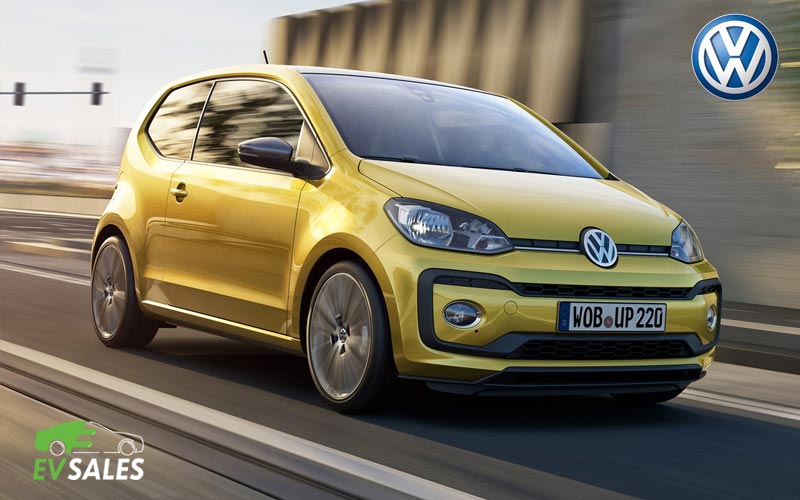
Normal, Eco, and Eco Plus are the three driving modes available to help you get the most out of your battery life. Eco Plus restricts acceleration, decreases the top speed, and focuses the temperature control system’s efforts solely on the driver to save energy. Eco does the same thing but has less influence on performance.
Furthermore…
When it comes to riding quality, the Volkswagen e-Up excels. Bumps are handled better than in many far more costly cars, and even potholes don’t bother it too much, making it a pleasant car to drive around town in.
It’s a far more pleasant ride than the stiff (and pricey) Mini Electric. Thanks to its precise steering, the Volkswagen e-Up is also a lot of fun to drive.
It’s not just a normal car.
The new Volkswagen e-Up has a much greater electric driving range than previous versions, but it isn’t class-leading. We have yet to put it through our real-world range test.
Still, Volkswagen claims 160 miles in ideal conditions, topping the more expensive Honda E. While the range will satisfy many city dwellers, competitors with longer official ranges, such as the Fiat 500 (199 miles) and the somewhat more expensive Renault Zoe (239 miles).
Performance:
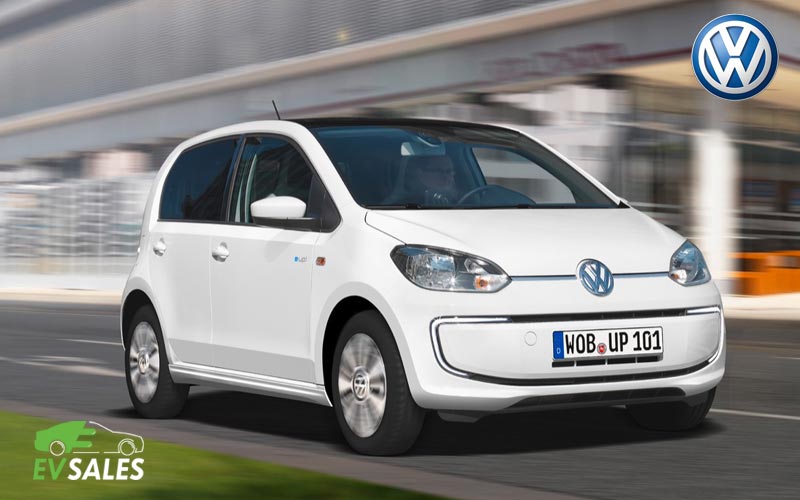
Making a small electric car out of a conventionally powered vehicle can often cause weight balance and handling issues, but not the Volkswagen e-Up.
True, the addition of a large battery pack makes it about 250kg heavier than the petrol Volkswagen E Up.
Still, when you press the accelerator pedal, the instantaneous power availability makes it feel faster than its fossil-fuelled stablemate.
It accelerates quickly away from traffic lights and crossroads, and it’s a breeze to drive, with no gears to fiddle with.
Plus…
The Volkswagen e-Up feels quicker around town than its stated 0-62mph speed of 11.9 seconds says, and you’ll have no trouble springing into a roundabout gap.
However, to conserve the car’s electric range, the top speed is limited to 82 mph, and acceleration at highway speeds is more sluggish.
To maximize the benefit of the e-regenerative Up’s braking technology, which absorbs energy that would otherwise be wasted when you lift off the accelerator and utilize it to fill up the battery, set the gear selector to ‘B’ mode.
That means you can drive most of the time with just one pedal. It takes a few miles to learn, but you’ll quickly discover that you don’t need to use the brakes unless you’re coming to a stop.
Insurance
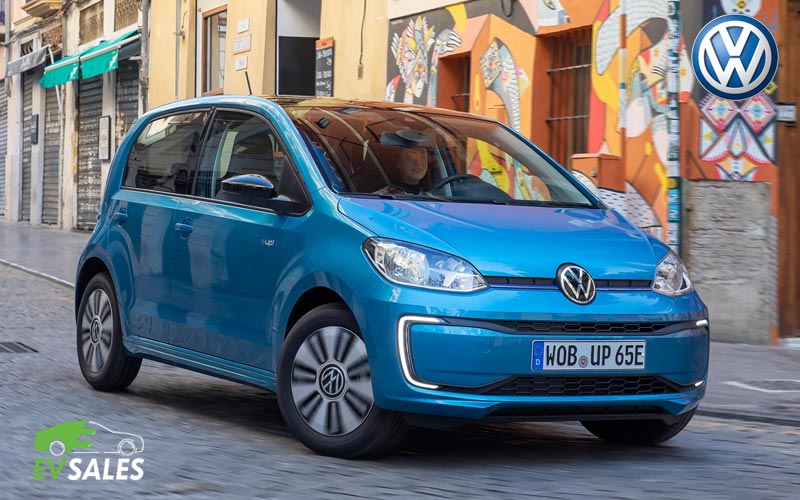
The Volkswagen E up three-star !’s Euro NCAP crash safety rating isn’t insignificant, but it should be treated with a grain of salt. Because the original design is over a decade old, much of the cutting-edge equipment when it was released has since been superseded by newer technology.
The same can be said about the tests themselves, which have recently gotten increasingly severe.
Still, an 81 percent adult protection rating, as well as an 83 percent kid safety rating, should not be overlooked. The up! received only 55 percent in the safety help’ area, which is the lowest of all the categories.
Moreover…
The Volkswagen e-up!, like all new Volkswagens, comes with the company’s standard three-year/60,000-mile warranty. Volkswagen also provides an eight-year battery guarantee with a 160,000-kilometer restriction (99,360 miles).
It covers battery degeneration, assuring that it will be replaced at no cost if it falls below a predetermined useful capacity.
Is Volkswagen E-Up Reliable?
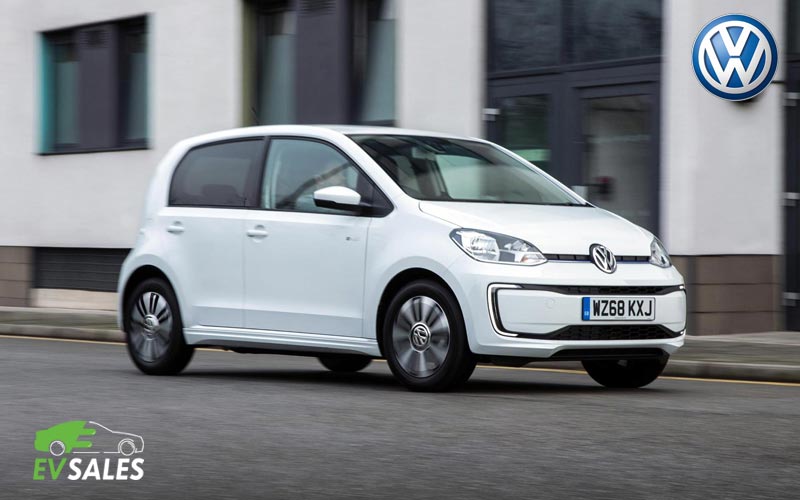
Electric automobiles, in general, are more reliable than their gasoline or diesel equivalents, owing to the lack of a sophisticated combustion engine and fewer moving parts.
Due to the car’s relative rarity, there is no particular data on the up! Or e-up! in the most current Driver Power owner satisfaction survey. However, Volkswagen’s 19th-place position in the manufacturer rankings isn’t bad.
Skoda and SEAT (other electric cars) produce rebadged versions of the e-up! Came in fifth and fourteenth place, respectively.
It’s a car that has become a part of the scenery of our roads in its numerous guises, and it’s amazing to think that it’s just been with us since 2011.
However, this automobile is now only available in a petrol version with a Volkswagen logo, and even then, there is an electric version. Which vehicle is this? The Volkswagen e-Up!
Cost and Verdict:
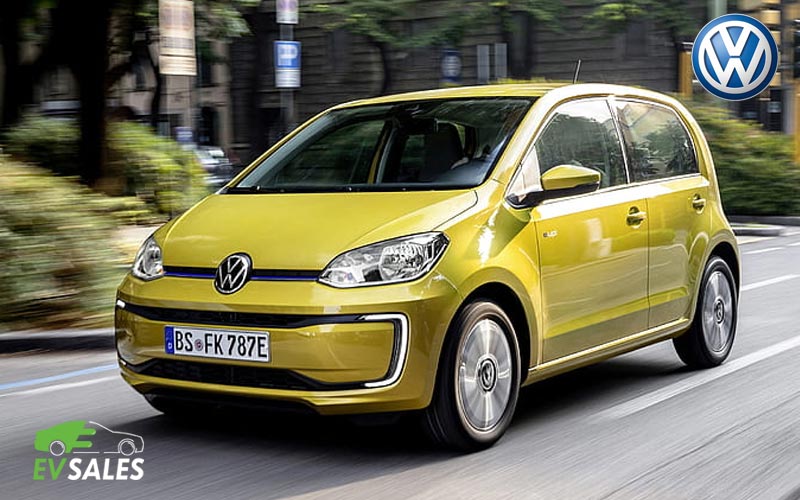
You’ll spend less on fuel expenses if you buy a Volkswagen e-Up and plug it in instead of filling it up than if you buy a petrol Volkswagen Up 1.0 TSI.
The Volkswagen e-Up, on the other hand, costs thousands of pounds more to buy, even after the government’s £1500 electric car subsidy is removed from the purchase price. To make up the deficit, you’ll have to drive a long distance.
Furthermore, while the VW e-Up may appear to be a low-tax alternative for work car drivers, this isn’t always the case. Yes, it has a lower benefit-in-kind (BIK) car tax rate than a petrol Up, but because it costs so much more to run, you’ll be sacrificing more of your earnings each month.
Moving on…
If you routinely travel into London’s Congestion Charge zone, the e-Up, like all other electric cars, will save you money. Climate control, rear parking sensors, heated seats, and cruise control are all included in the e-Up, which is also more kit than the top-of-the-line R-Line Up. The battery also comes with an eight-year warranty (or 99,360 miles).
A full charge takes 16 hours from a conventional three-pin socket, 5 hours and 30 minutes from a 7kW home charger, and an hour from a CCS fast charger.
In that regard, the Nissan Leaf and Hyundai Kona Electric are superior. However, if an e-Golf fits into your lifestyle and you have access to your charging station, it’s a fantastic option that’s worth considering, especially if you go the used route and find a low-mileage model.
Conclusion – Volkswagen E-Up Car Review:
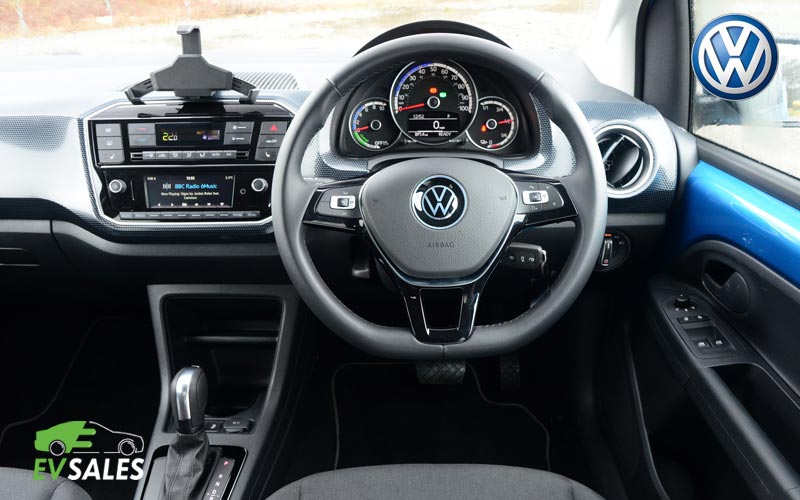
While the long-awaited Volkswagen ID.3 family hatchback debuted in the UK in late 2020, the ID.2 city car is still some years away from production, so the e-up! Has a critical role to play in the meantime.
The new e-up! It is a considerable upgrade over the first model, which debuted in 2014; a more energy-dense 36.8kWh battery takes up the same physical space as the old 18.7kWh battery, allowing the car to travel up; to 159 miles on a single charge?
It will accelerate from 0 to 62 mph in roughly 12 seconds, but the quick torque common in electric vehicles makes it seem faster and more exciting than the figures suggest. 4The e-up! is pleasantly roomy on the inside, but a lack of storage space lets it down.
Moving on…
Quality is good, but newer competitors like the Honda e and MINI Electric appear to be more upmarket and outperform the up! In terms of standard equipment.
Even though such vehicles are no larger or more practical than Volkswagen, you pay a premium for them.
Due to overwhelming demand, orders for the e-up! It was temporarily halted in the UK in late 2020, but it is now available to customize on its website. The Skoda Citigo-e iV, its sibling vehicle, has been discontinued, but the SEAT Mii electric, which is mechanically identical, is still available.
The VW e-Up is fun to drive, easy to park, and has a good, if not exceptional, electric range.
It’s a good choice if you’re looking for an electric city runabout, but a Renault Zoe with a plusher cabin, more passenger room, and a longer range is available for a little more money.
That’s all we have for today, fam!
Surely you gained a lot of knowledge from this article and if you want to read more, visit our website.
The End.



